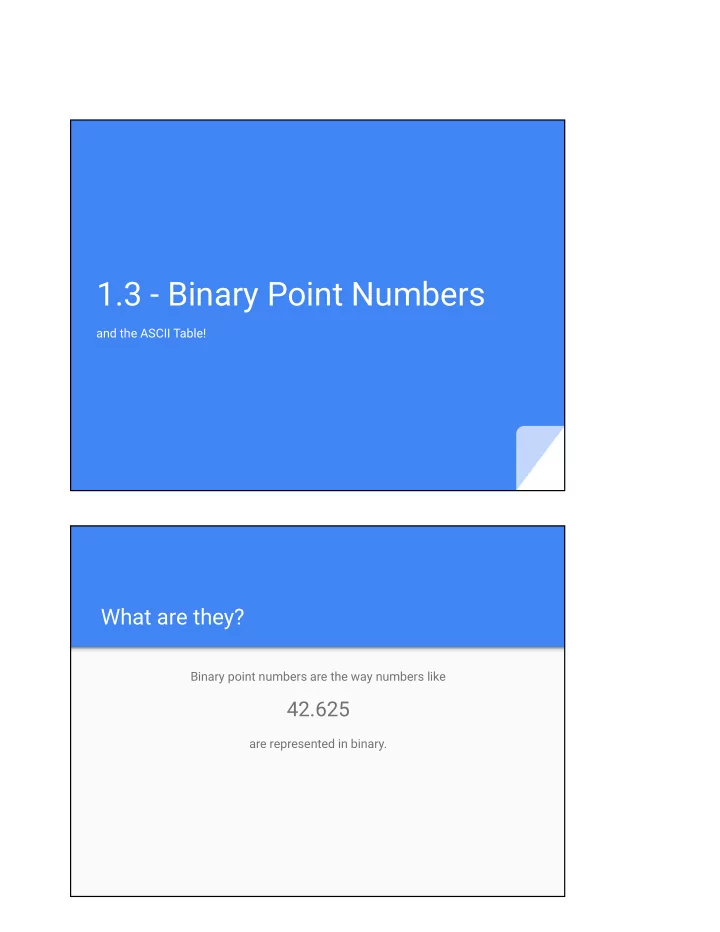

1.3 - Binary Point Numbers and the ASCII Table! What are they? Binary point numbers are the way numbers like 42.625 are represented in binary.
But first, we’ll start the other way Take a number like: 1101.101 2 And remember our columns? Example: Binary point number to decimal 2 3 2 2 2 1 2 0 2 -1 2 -2 2 -3 1 1 0 1 . 1 0 1 2 = 8 + 4 + 0 + 1 + 0.5 + 0 + 0.125 = 13.625 10
You try: Binary point number to decimal 2 3 2 2 2 1 2 0 2 -1 2 -2 2 -3 2 -4 1 0 1 1 . 0 0 1 1 2 = 8 + 0 + 2 + 1 + 0 + 0 + 0.125 + 0.0625 = 11.1875 10 And finally the reverse Rules: ● Use only the fractional part (to the right of the decimal) Multiply by 2 ● ● Take the fractional part and repeat until the fractional part is zero. ● Read the numbers DOWNWARD ex: 0.375 10 to binary 0.375 * 2 = 0.75 0.75 * 2 = 1.5 0.5 * 2 = 1.0 = 0.011 2
Another Example Convert 42.125 10 to binary 1 2 42 10 = 101010 2 0.125 * 2 = 0.25 the usual way (div by 2) 0.25 * 2 = 0.5 0.5 * 2 = 1.0 = 101010.001 2 Sometimes it gets funky…. 0.4 * 2 = 0.8 Convert 0.8 * 2 = 1.6 0.4 10 0.6 * 2 = 1.2 to binary 0.2 * 2 = 0.4 0.4 * 2 = 0.8 = 0.0110011001100... 2 0.8 * 2 = 1.6 = 0.0110 2 0.6 * 2 = 1.2 …….
Practice --- Tangent: The ASCII Table
Recommend
More recommend